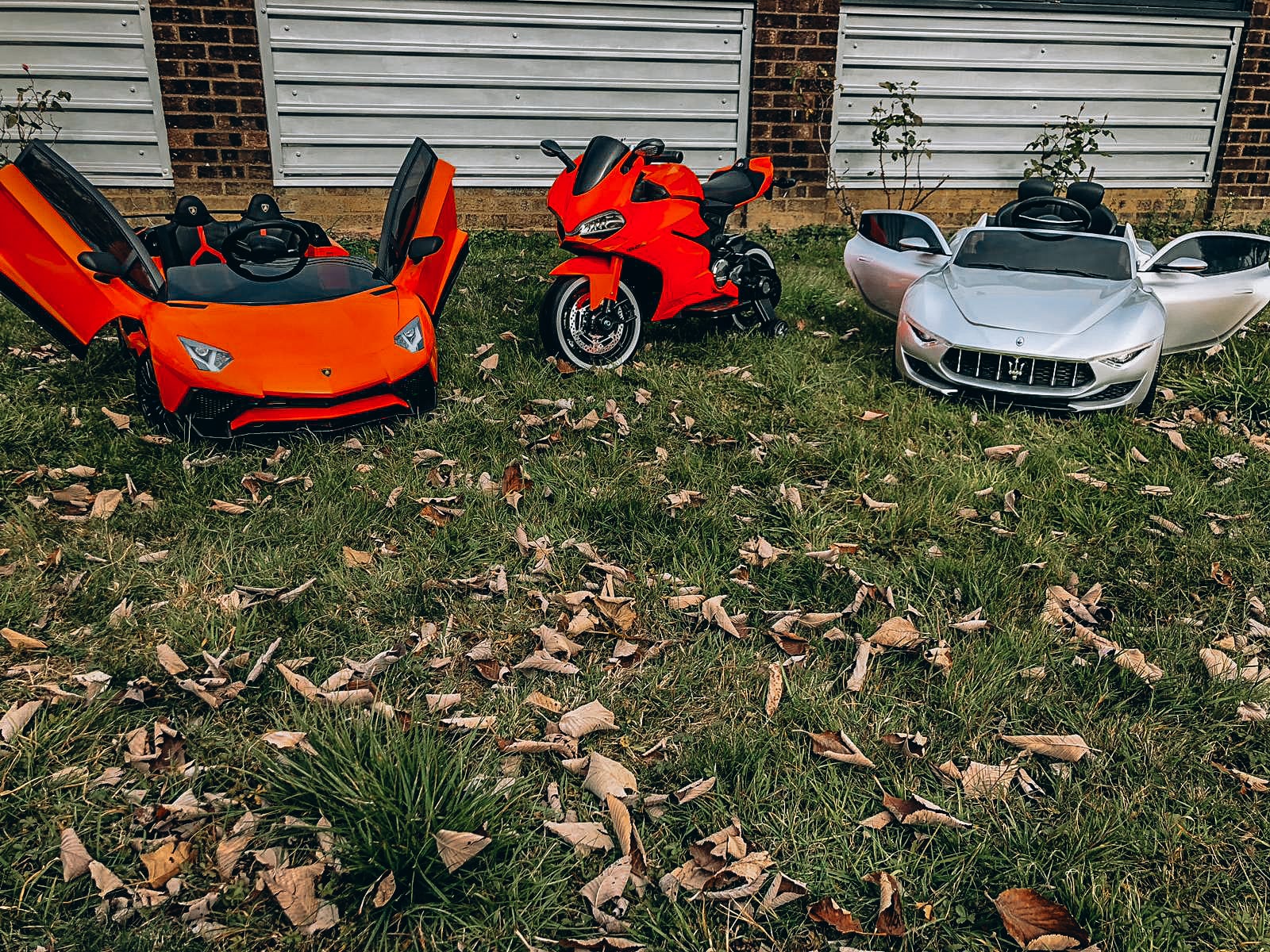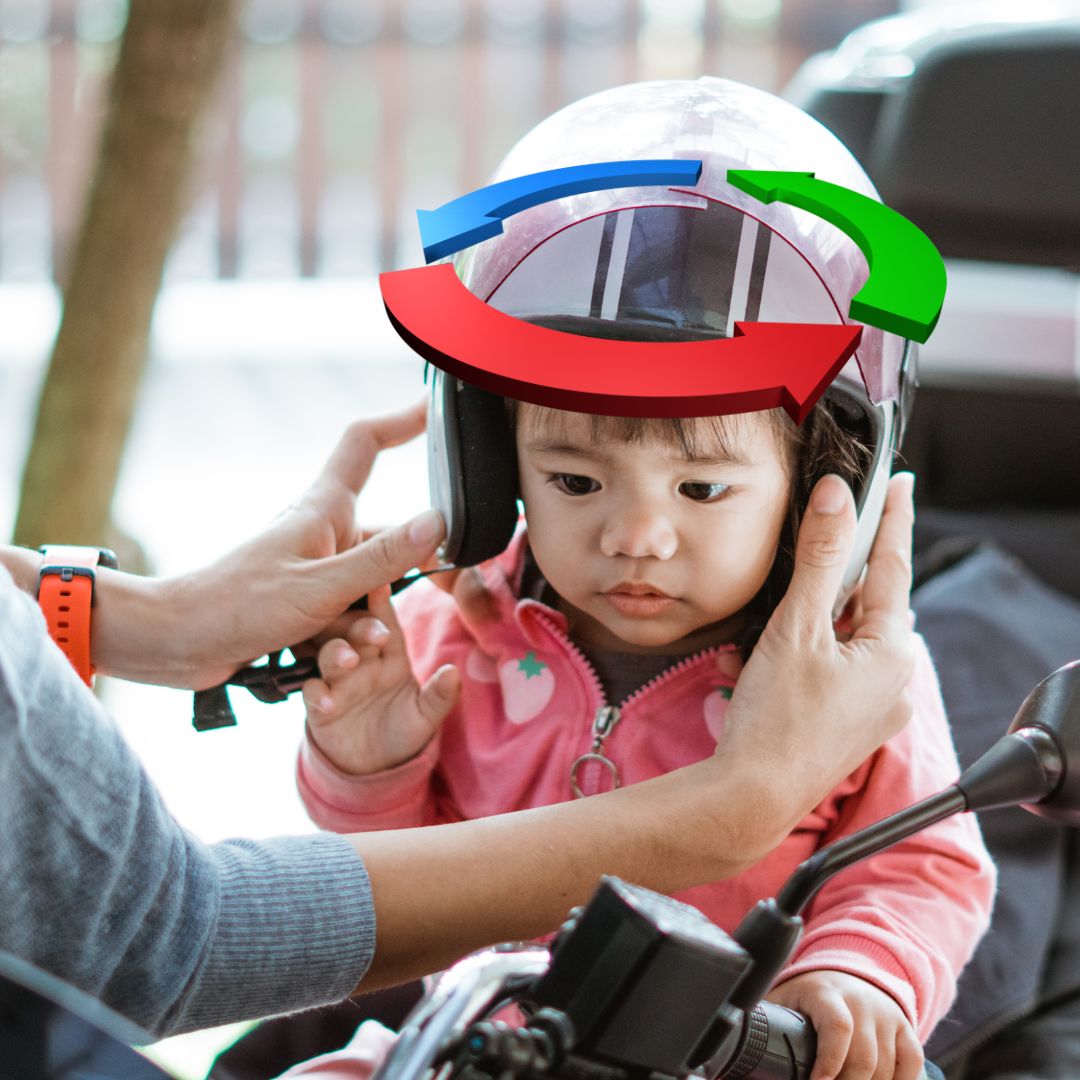
Updated: 27.05.25
Confused about choosing between 6V, 12V, or 24V electric ride-on cars for your child? This guide compares 6V vs 12V ride-on toys, covering power, batteries, and safety to help you make the best choice for your child’s ride-on car adventure.
The “V” in 6V, 12V, or 24V stands for volts, which measures the electrical power delivered to the ride-on car’s motor. At RiiRoo, we offer 6V ride-on toys, 12V ride-on toys, and 24V ride-on cars, with 6V being the least powerful and 24V delivering top performance for rugged terrains.
1. What Does Voltage Mean for Ride-On Cars?
6V Ride-On Cars
Low power, ideal for indoor use and flat surfaces like pavements.
12V Ride-On Cars
Moderate power, suitable for outdoor use on grass, gravel, or slight inclines.
24V Ride-On Cars
High power, perfect for rough terrains and steep inclines.
2. Power and Performance of 6V vs 12V Ride-On Toys
A 6V ride-on car has less power than a 12V or 24V model, making it ideal for younger children (ages 1–3) on flat surfaces. For outdoor adventures on grass or slight inclines, a 12V or 24V ride-on car provides the extra power needed for a smoother ride.
3. Price Differences
6V ride-on toys are generally more affordable, making them a great choice for budget-conscious parents. In 2025, the price gap between 6V and 12V models has narrowed due to advanced manufacturing, but 12V and 24V ride-on cars often include premium features like twin motors or parental remote controls, justifying the cost.
4. Choosing Between 6V and 12V Ride-On Cars
Your choice depends on your budget, your child’s age, and the terrain. Here’s a breakdown:
6V Ride-On Toys
- Budget-friendly and ideal for children aged 1–3.
- Best for indoor use or flat outdoor surfaces like pavements.
- Lower power ensures safer speeds for young beginners.
Explore our 6V ride-on toys for safe, affordable fun.
12V Ride-On Toys
- More powerful, suitable for children aged 3+.
- Handles outdoor terrains like grass or gravel with ease.
- Often includes advanced features like remote control or twin motors.
Check out our 12V ride-on toys for versatile outdoor adventures.
For rugged terrains, explore our 24V ride-on cars.
5. Battery Life and Maintenance
Both 6V and 12V ride-on car batteries typically last 1–2 hours per charge, depending on usage. To extend battery life:
- Charge for 8–12 hours, avoiding overnight charging.
- Use only compatible 6V or 12V batteries for replacements.
- Store batteries in a cool, dry place when not in use.
Find compatible 6V and 12V batteries in our spare parts collection.
6. Safety First
Safety is paramount at RiiRoo. Always supervise children, follow charging instructions, and avoid using incompatible batteries. For more tips, read our Ride-On Toy Safety Guide.
7. Comparison of 6V and 12V Ride-On Cars
| Feature | 6V Ride-On Cars | 12V Ride-On Cars |
|---|---|---|
| Power | Low | High |
| Suitable Age | 1–3 years | 3+ years |
| Speed | Slow to Moderate | Moderate to Fast |
| Price | Lower | Higher |
| Terrain | Flat surfaces | Flat, gravel, grass |
8. Interactive Quiz: Test Your Knowledge
6V vs 12V Ride-On Cars Quiz
9. How to Pair a Parental Remote Control
10. Frequently Asked Questions
What’s the difference between 6V and 12V ride-on cars?
6V ride-on cars are less powerful, ideal for kids aged 1–3 on flat surfaces. 12V models offer more power, suitable for ages 3+ and outdoor terrains like grass or gravel.
Is a 6V or 12V ride-on car better for my child?
Choose a 6V ride-on car for younger kids (1–3) or indoor use. Opt for a 12V model for older kids or outdoor adventures. See our ride-on car collection.
How can I save money on a ride-on car?
6V ride-on toys are more budget-friendly. Look for deals in our ride-on cars collection during seasonal sales.
What’s the best battery for a ride-on car?
Use a 6V battery for 6V ride-on toys or a 12V battery for 12V models to ensure compatibility. Shop our replacement batteries.
How long does it take to charge a 6V or 12V ride-on car battery?
Charging takes 8–12 hours. Follow the manufacturer’s instructions and avoid overcharging to maintain battery life.
Can I use a 12V battery in a 6V ride-on car?
No, using a 12V battery in a 6V ride-on car can damage the motor. Read our battery upgrade guide for details.
11. Explore More Ride-On Toy Guides
- What’s the Difference Between 24V and 24V Parallel Ride-On Cars?
- Can You Put a 24V Battery in a 12V Ride-On?
- How Fast Do Ride-On Toys Go? A Parent’s Guide
12. Summary
Choosing between 6V, 12V, or 24V ride-on cars depends on your child’s age, the terrain, and your budget. 6V ride-on toys are perfect for young kids and indoor use, while 12V and 24V models offer more power for outdoor fun. Visit RiiRoo’s ride-on car collection for safe, high-quality options to spark your child’s adventure!





Share:
Our Top 5 Ride On Motorbikes For Kids
Audi TTRS 12V Ride On Car For Kids Overview Video